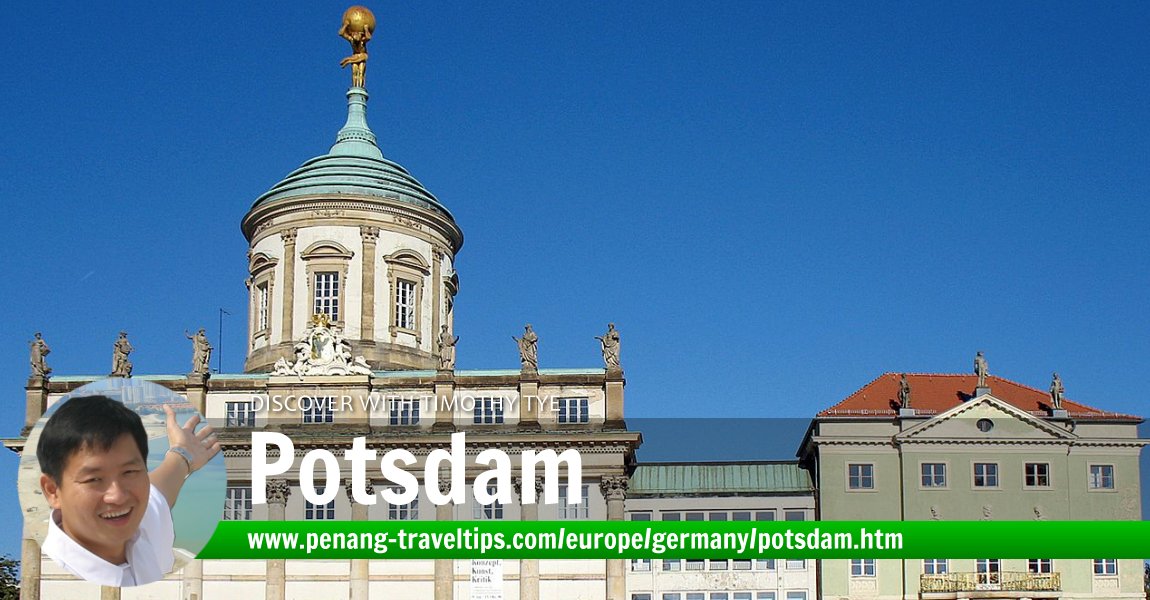 Potsdam: Market Square with the Old Town Hall of Potsdam, Brandenburg, Germany
Potsdam: Market Square with the Old Town Hall of Potsdam, Brandenburg, GermanySource: https://commons.wikimedia.org/wiki/File:Das_Alte_Rathaus_zu_Potsdam.jpg
Author: Florian S.

Potsdam is the capital and biggest city in the state of Brandenburg. It is located to the southwest of the German capital Berlin, which is a city state entirely surrounded by but not part of Brandenburg. Potsdam covers 187 sq km (72 sq mi) and has a population of 159,000 people (2012 estimate).The city is on the river Havel, about 24 km (15 mi) from the Berlin city center.
Potsdam was the residence of Prussian kings and German emperors. As such, it is to Germany what Windsor is to Britain. The city is also home to the palaces and parks of Sanssouci, which is often compared to the Versailles. Sanssouci is the former summer palace of Frederick the Great, King of Prussia. In 1990, it was inscribed as a World Heritage Site, under the title Palaces and Parks of Potsdam and Berlin, during the 14th session of the World Heritage Committee meeting in Banff, Alberta, Canada.
Members' Travel Shots of Potsdam
- ChyeLim Lee posted on Potsdam's Art Museum on 27 September, 2019
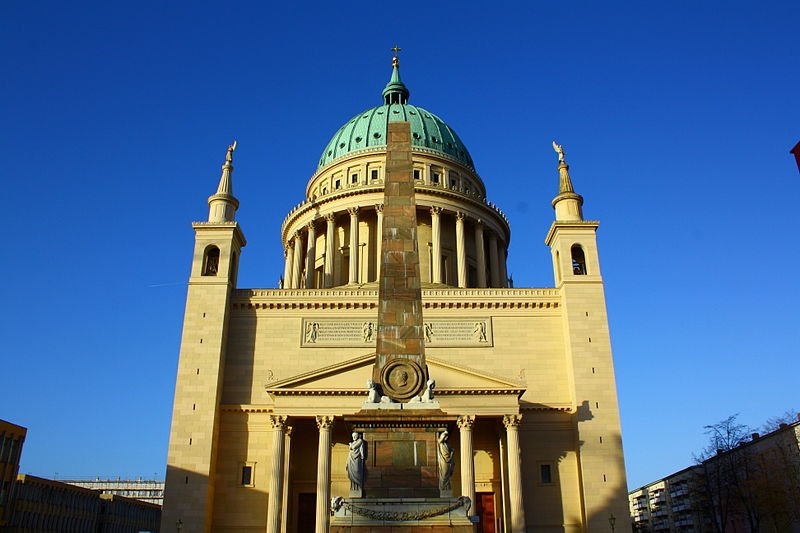 St Nikolaikirche, Potsdam
St Nikolaikirche, PotsdamSource: https://commons.wikimedia.org/wiki/File:Nicolaikirchepotsdam2011.jpg
Author: DennisHH

Human habitation in the Potsdam area has been traced to the Bronze Age. The present city can trace its roots to a Slavic settlement established probably around the 7th century. It was overshadowed by the city of Brandenburg an der Havel until the 17th century, when Brandenburg was devastated by the Thirty Years' War, and Potsdam took over as the capital.
From 1815 until 1945, Potsdam was the capital of the governorate of Potsdam. While Berlin was the official capital of Prussia and later of the German Empire, the German court remained in Potsdam.
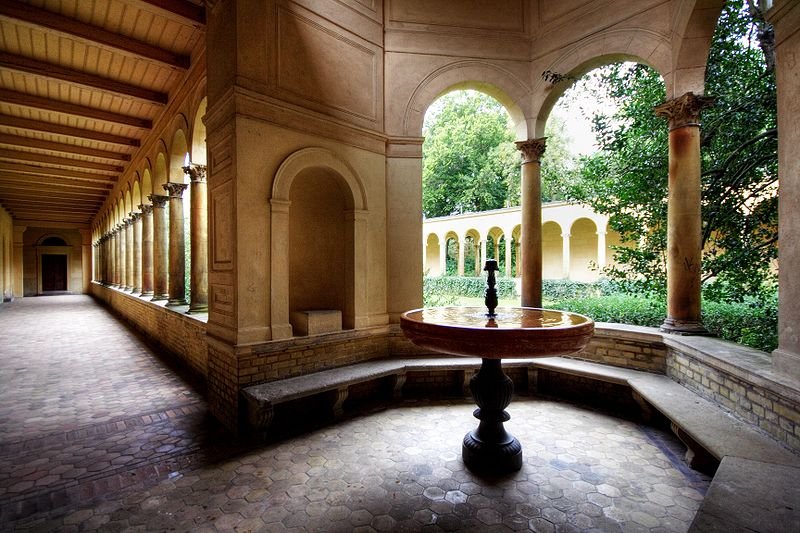 The interior of Friedenskirche in Potsdam
The interior of Friedenskirche in PotsdamSource: https://commons.wikimedia.org/wiki/File:Friedenskirche_innen_Potsdam.jpg
Author: extranoise

Potsdam was severely destroyed by Allied bombing during World War II. After the war, it became part of East Germany. Potsdam served as the capital of the shortlived East German state of Brandenburg until the East German government abolished federative states to create smaller administrative districts. From 1952 until 1990, Potsdam was the capital of the administrative district of Bezirk Potsdam.
Following German reunification, the federal state of Brandenburg was reestablished, and Potsdam once again became its capital.
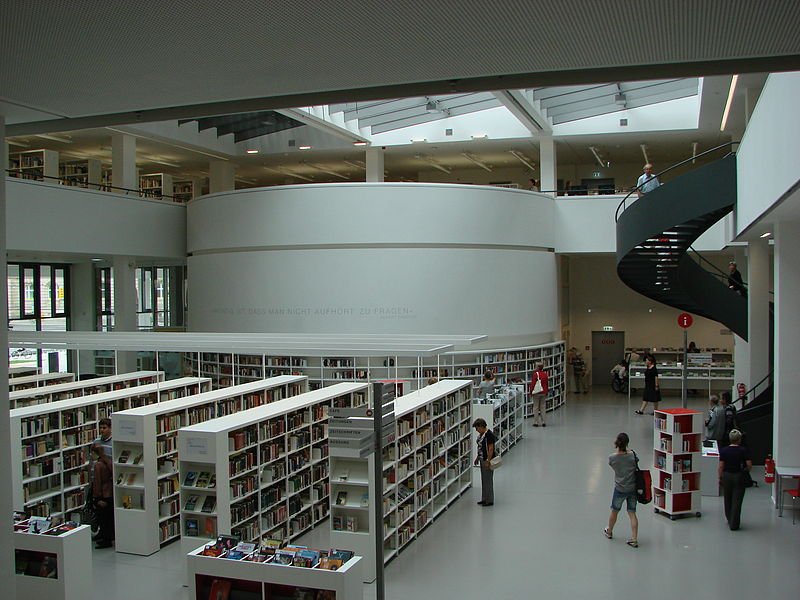 The City & State Library of Potsdam
The City & State Library of PotsdamSource: https://commons.wikimedia.org/wiki/File:Stadt-_und_Landesbibliothek_Potsdam_01.JPG
Author: Lutki

How to go to Potsdam
There are several ways to reach Potsdam from Berlin. As it is within Berlin's metropolitan area, you can take the S-Bahn S7 from Berlin. The Potsdam Railway Station is its terminus.If you are going by road, you can either take the ring road Autobahn 10, or Autobahn 115 from Berlin.
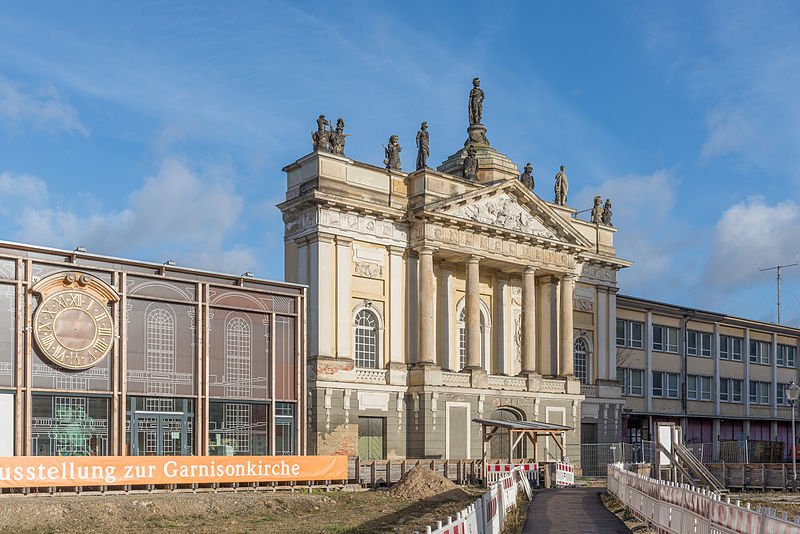 Garnisonkirche, Potsdam
Garnisonkirche, PotsdamSource: https://commons.wikimedia.org/wiki/File:Garnisonkirche_November_2013.jpg
Author: Arild Vågen

Places of Interest in Potsdam
- Alexander-Newski-Gedächtniskirche
- Alte Kirche Golm
- Aquarellsammlung Potsdam
- Astrophysikalisches Observatorium Potsdam
- Belvedere auf dem Pfingstberg
- Bildergalerie Sanssouci
- Bornstedter Kirche
- Cecilienhof
- Deutsches Armeemuseum
- Dorfkirche Eiche
- Dorfkirche Golm
- Dorfkirche Grube
- Dorfkirche Marquardt
- Dorfkirche Nattwerder
- Einsteinturm
- Erlöserkirche
- Filmmuseum Potsdam
- Französische Kirche
- Friedenskirche Potsdam
- Garnisonkirche Potsdam
- Gemäldesammlung Potsdam
- Heilandskirche am Port von Sacrow
- Heiligengeistkirche Potsdam
- Jagdschloss Stern
- Kirche Fahrland
- Lindstedt Castle
- Martin-Luther-Kapelle
- Palais Lichtenau
- Potsdam City Gates
- Pottsdam Museum
- Sanssouci Palace
- Schloss Babelsberg
- Schloss Marquardt
- Schloss Sacrow
- St Nikolaikirche
- St Peter und Paul
- Stadtschloss Potsdam
- Versöhnungskirche
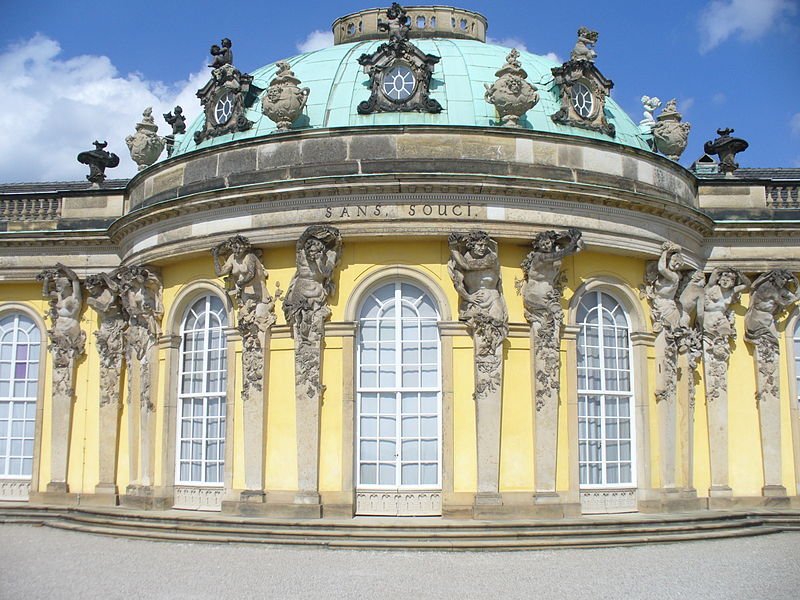 Sanssouci Palace, Potsdam, Brandenburg
Sanssouci Palace, Potsdam, BrandenburgSource: https://commons.wikimedia.org/wiki/File:1018.Schlo%C3%9F_Sanssouci(frz.sans_souci_%3D_ohne_Sorge)_am_Hang_eines_Weinberg_1745-1747_Steffen_Heilfort.JPG
Author: Steffen Heilfort


Copyright © 2003-2025 Timothy Tye. All Rights Reserved.

 Go Back
Go Back